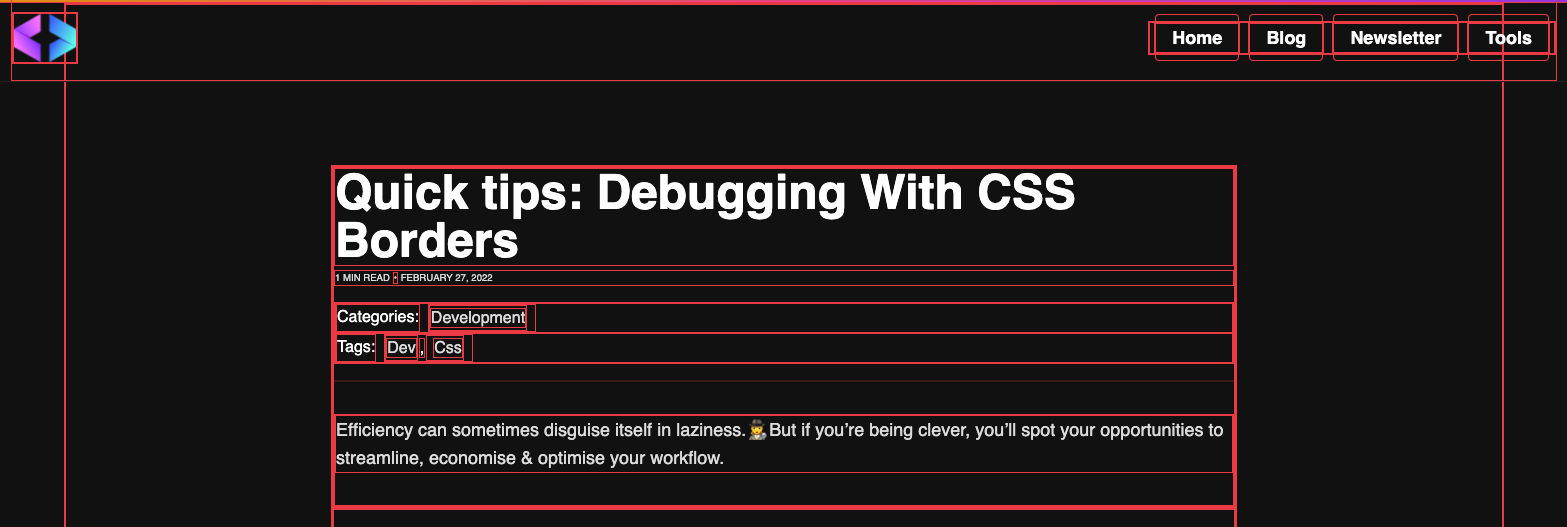Quick tips: Debugging With CSS Borders
Table of Contents
This is a topic that comes up every now and then on Twitter and a few other platforms I regularly visit.
The aged old secret of debugging CSS and layouts.
Introducing *
* is a magical selector in CSS that selects all elements below it which means it has powerful effects 💪
* { font-size: 24px;}The above CSS will set the default font-size across all elements (including header tags) to 24px.
By adding this CSS at the top level, you can do some pretty crazy things, but keep in mind, it is not a specific selector, meaning any specific selectors like h2 will still apply and override the properties set via *
How does this help debugging?
What is the most typical issue we encounter with CSS
Layout positioning 🤦
Yep. If I had a dollar for every time I've had positioning issues in CSS, I'd have exactly a million dollars.
I typically have these issues when dealing with absolute elements, or repeating elements with margins and paddings.
This 3 line code, also dubbed the console.log of CSS solves all of that:
* { border: 1px solid red;}This very quickly highlights all elements, resulting in a look like this:

You can very quickly see where the elements are starting and ending, and their bounding boxes which makes things a little easier to debug.
How about this one:
div { border: 1px solid red;} h1, h2, h3, h4, h5, h6 { border: 1px solid green;} p, span { border: 1px solid yellow;} a { border: 1px solid blue;}Now we see:
- Divs with red borders
- Heading tags with green borders
- P + span tags with yellow tags
- Links with blue tags

Simple, but effective debugging with just a few lines of code 🚀
